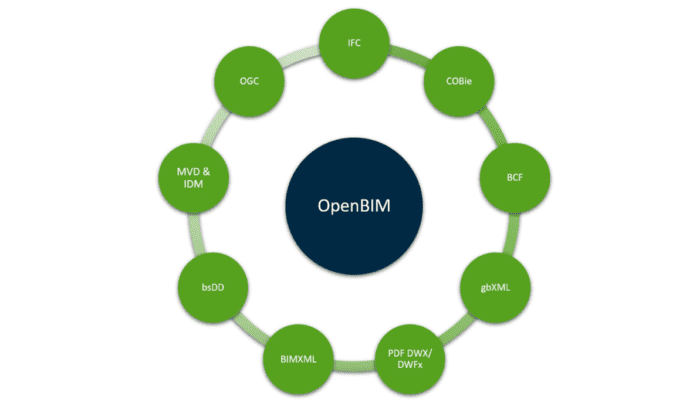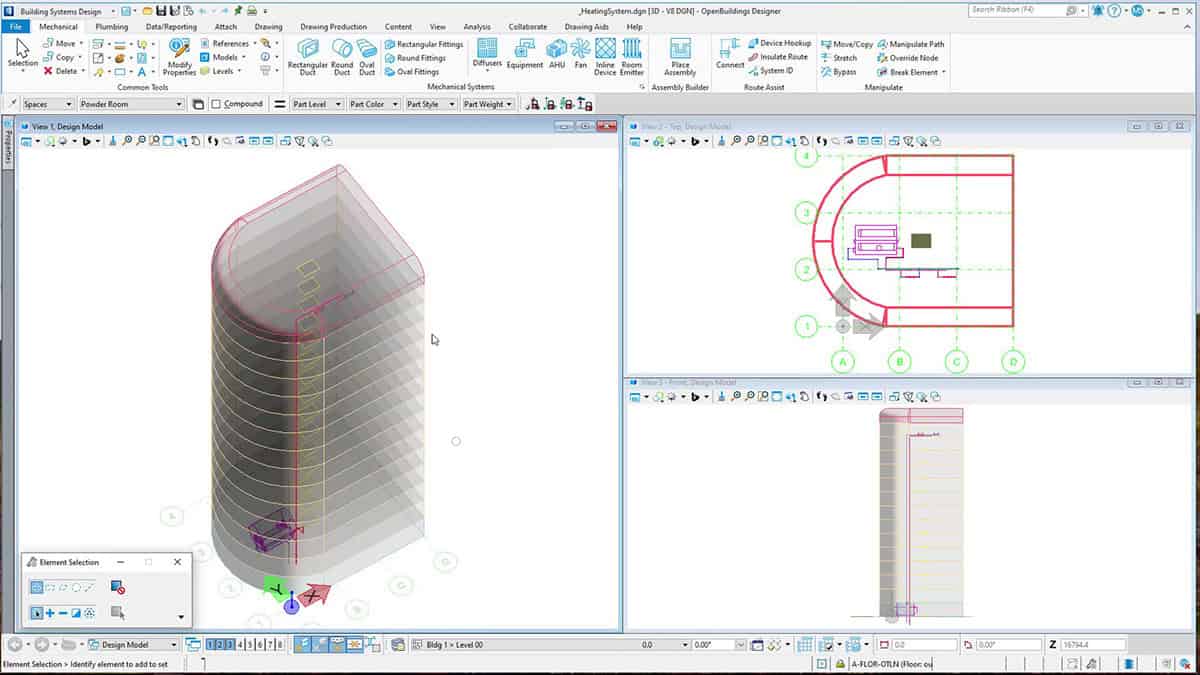The current transformation of the AEC industry towards digitization is in full swing. Popular buzzwords include OpenBIM, ClosedBIM, or Digital Twins. In this post, we will briefly introduce OpenBIM and ClosedBIM and then explore what working with them means.
Introduction to OpenBIM and ClosedBIM
OpenBIM is a software-independent planning methodology that creates an easy way to exchange designs between AEC professionals using individual software solutions. This means all design teams can continue to work with their usual software and don’t have to adapt their workflow according to the BIM processes. For the next few years, this process will become more and more relevant as it will become advantageous with regards to national and international planning developments.
In contrast, ClosedBIM works with one software product in the same data format. A disadvantage of this approach is its limited flexibility, making it imperative that all planning teams work with the same software to avoid interface problems. Though this can also yield a significant advantage, the ClosedBIM variant offers little flexibility, making collaboration more difficult.
In BIM projects of varying scale, designers of the same and different disciplines collaborate in various phases with multiple applications within both internal and external teams – and those teams are becoming increasingly remote. All of this requires effective coordination of project information. Data exchange must be fast, simple, and effective to ensure successful project execution.
Both methods have their purpose, depending on their scope of application, and each of the working approaches offers its unique advantages. As long as BIM is used, it is a well-planned project!
How OpenBuildings Designer Supports OpenBIM
Now let’s explore how OpenBuildings Designer, Bentley’s comprehensive building design software, enables architects and engineers to work in an Open BIM environment.
As previously noted, OpenBIM is an independent and cross-system data exchange. With OpenBIM, each planner plans their specialist model, which ensures improved transparency and traceability of responsibilities.
In ClosedBIM, the entire planning team must use the same software to have the smoothest possible data exchange. All information is transferred in the easiest way; therefore, there are no interface problems.
OpenBuildings Designer can handle both BIM methods. It supports all the OpenBIM workflows using standard OpenBIM formats like IFC, COBie, and BCF. It was developed to take advantage of both interoperability with external applications and information exchange within Bentley Systems’ software.
Digital Interoperability permits digital workflows based on vendor-neutral formats such as IFC, BCF, COBie, gbXML, etc. At its core, OpenBIM is a collaborative process that is vendor format-neutral.
It supports information exchange through formats such as IFC, COBie, and BCF while also enabling users to publish information in Bentley’s common modeling and connected data environment. This capability leads to an easy exchange of project data between different disciplines.
OpenBuildings Designer supports AEC professionals so they can:
- Achieve interoperability and a smooth exchange of information
- Set up the WorkSet for IFC compatibility and COBie handover
- Export model files to the IFC format
- Reference IFC files to the federated model
- Create COBie spreadsheets
- Work with other file formats
We recognize that the ability to open files in other user formats is crucial to the successful, cost-effective design, delivery, and operation of infrastructure assets. IFC data is just one of the ways to share information and interoperate with other CAD, BIM, and analysis applications.
OpenBuildings Designer also delivers:
- Full DGN/DWG compatibility
- 3D PDF and Google Earth support
- Import/export tools for the primary general-purpose industry standards, such as STEP, STL, IGES, DXF, and SKP (SketchUp)
- Import/export tools for many dedicated industry standards, such as CIS/2 and SDNF
- Seamless integration with STAAD.Pro and RAM International, Bentley’s structural analysis products
OpenBuildings is Playing a Key Role in Advancing Digital Architecture
As an industry leader on interoperability, Bentley recognizes that the ability to open files in other user formats is crucial to the successful and cost-effective design, delivery, and operation of infrastructure assets.
OpenBuildings Designer’s abilities may further lead to creating and maintaining a digital twin of any building designed. The data created can be uploaded into the Bentley iTwin Design Review, enabling project teams to view and maintain the data of all other OpenBIM applications. The digital twin created can include physical and functional models, drawings, specifications, and analytical models, helping AEC professionals unlock the full potential of this breakthrough technology.
To summarize, creating building models using OpenBuildings Designer is an architect or engineer’s first step towards their digital twin journey.
Interested in a no-risk, free trial of OpenBuildings Designer? Click on the button below:







